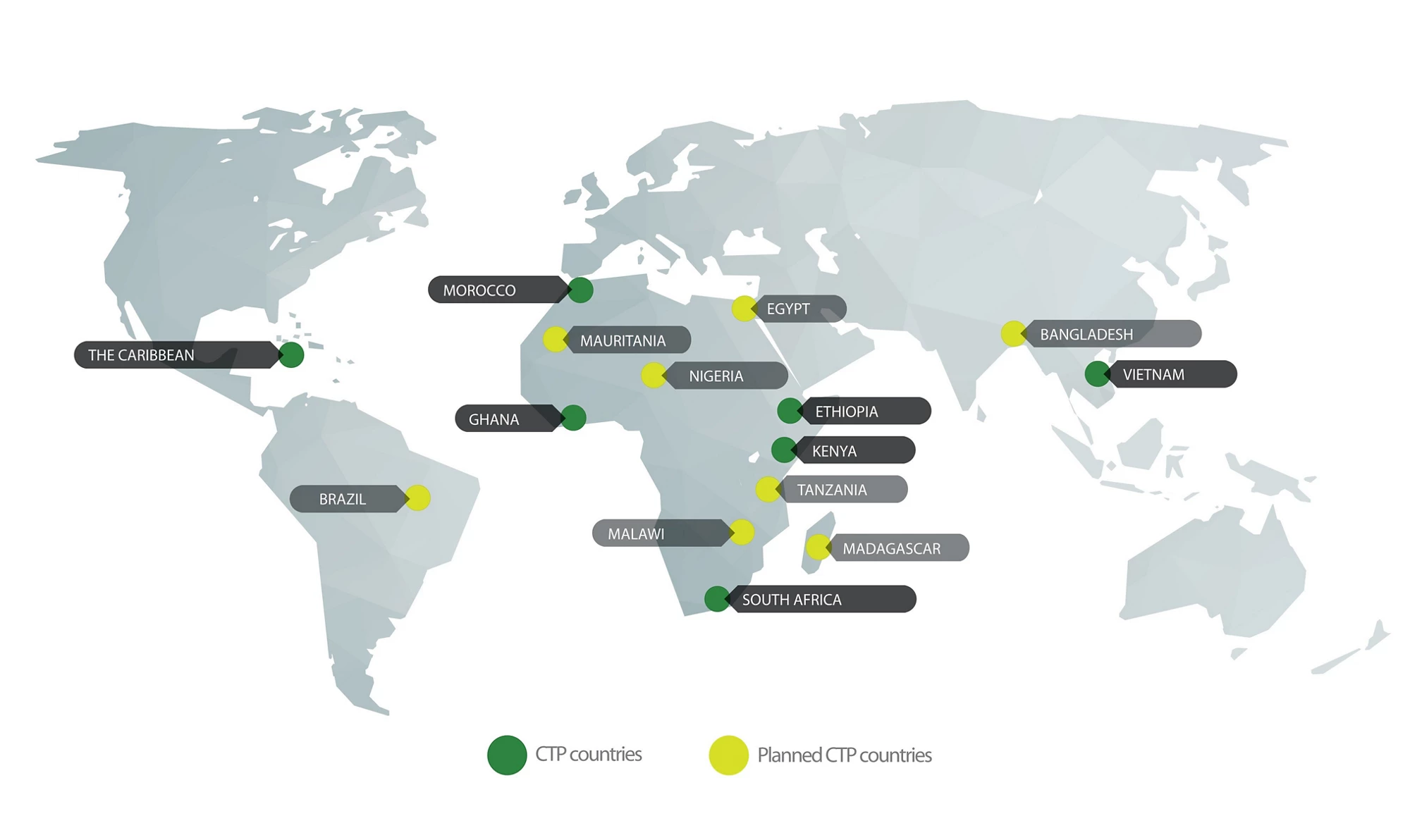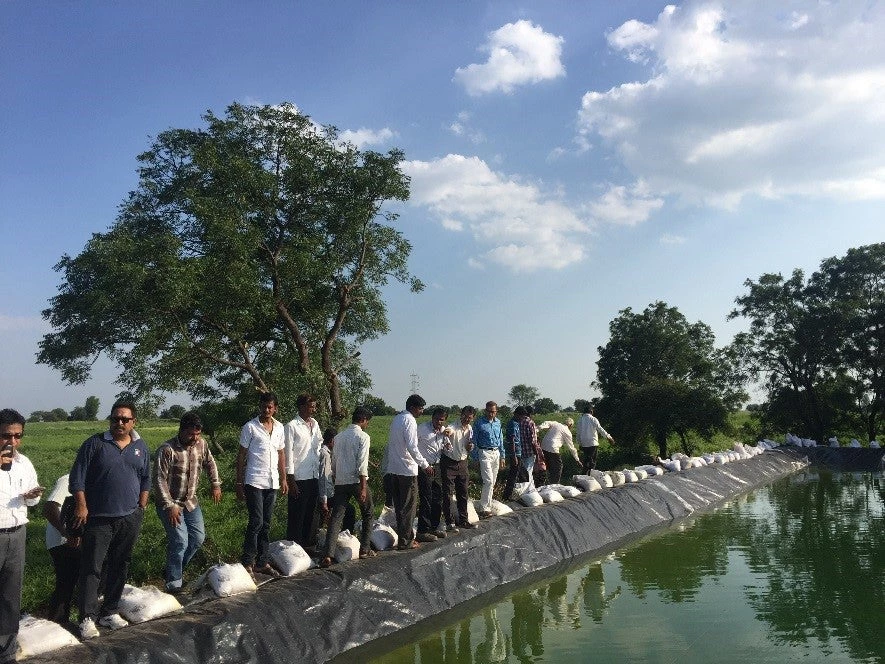
We were standing at ground zero in the fight against climate change, looking at a still body of water and talking. Our group was gathered along the edges of a “farm pond,” a technique used by farmers to enhance agricultural resilience to climate change, which often impacts countries through crippling droughts. A farmer demonstrated the measures he had taken to protect his livelihood from the extreme weather events that were increasingly common in his region.
In recent years, droughts had devastated the Indian state of Maharashtra. While this year’s monsoon brought much-needed rain, low rainfall in previous years caused production to plummet, the economy to slow, and even resulted in a wave of farmer suicides.
And the weather for seasons to come? While no single weather event can be definitively linked to climate change, numerous computer models project rising temperatures and an increase in rainfall variability across the state, both of which pose major threats to agricultural production. The threat was sufficiently grave that the Maharashtra government requested assistance from the World Bank to arm their farmers with the latest climate adaptation and mitigation techniques.

The good news is that solutions do exist for these drought-afflicted farmers and the millions of people whose lives are increasingly at risk from weather patterns that are unfamiliar, bizarre, and, at worst, life-threatening.
New techniques and technologies for climate-smart agriculture have already shown great potential and impact. These include farm ponds, micro irrigation, drought-resistant seeds, solar pumping, shade netting, and even a few cutting-edge concepts I learned about during my trip, such as remote sensing and drones.
Beyond agriculture, other climate-related sectors have seen a similar surge of innovation. From the clean energy sector with advances in solar power and battery storage to the water sector with new point-of-use water purification systems, a plethora of proven solutions to climate challenges have emerged.
It is likely that even more innovative technologies will arise from labs across the world in coming years. Initiatives like Mission Innovation, in which more than 20 major countries plan to double R&D spending on clean energy, will only increase the speed of the ongoing clean technology revolution.
So, if climate solutions exist and climate threats are dire, why aren’t these solutions being deployed at scale with the requisite urgency? With the Paris Agreement entering into force this month, the political will is evident ; with the many public and private commitments to increase climate funding, a great deal of money is available, as well.
One key challenge to deploying climate solutions on a large scale – particularly in developing countries – is the capacity of local innovation ecosystems to adapt these solutions for local markets, and to provide a sustainable delivery model so these solutions can reach end users.
The shift to a climate-smart world is not incremental but transformational, and the capacity to implement innovation must be established at the local level. Unfortunately, such capacity is often lacking in developing countries, where the effects of climate change are most severe and the needs for innovative solutions most acute.
The World Bank’s Climate Technology Program (CTP) has been working for over five years to address this challenge. Its network of seven Climate Innovation Centers supports local tech firms that develop climate solutions for local markets. The more than 300 companies supported by the centers have helped improve climate resiliency by commercializing innovative technologies, such as hydroponics, solar-powered pumps, and micro irrigation systems.
Now, the Climate Technology Program is expanding its efforts in this area by launching the Climate Business Innovation Network (CBIN). The network will connect public and private organizations that are committed to supporting climate innovation in developing countries. A diverse pool of partners —including foundations, donors, businesses, investors, venture funds, universities, and government agencies — will collaborate to provide advisory services, market connections, and funding to growing clean-tech businesses.
The network will launch at COP22 in Marrakech, starting with more than 30 partners, and its efforts will focus first on the Africa region. With support from the network, local enterprises will adopt techniques and technologies to reduce emissions and improve climate resilience, while their countries will capture greater value in the innovation value chain, build competitive sectors, and create jobs.
Can the Climate Business Innovation Network ensure that farmers in India respond to changing weather patterns with the latest technologies? Can the network accelerate the deployment of new batteries from Japan into rural areas of Africa?
None of the partner organizations can accomplish all of that alone. But together, there’s a chance. By coordinating the efforts of the many organizations in the climate space, and supporting the adaptation of innovative technologies to local conditions, the Climate Business Innovation Network will help to address some of the most significant barriers that prevent climate innovation from reaching the people who need it most.


Join the Conversation